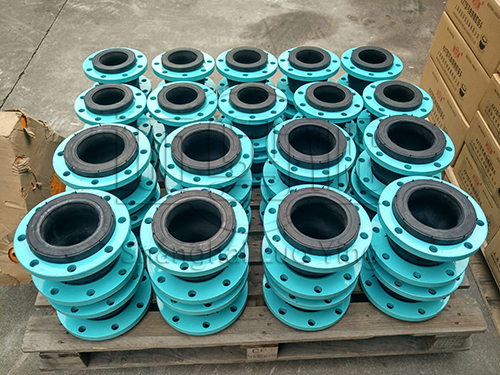How to store rubber joints for long-term storage
Aug-25-20
Our company's rubber joints are manufactured using a new air-blown moulding process, consisting of a composite sphere made of inner rubber layers, reinforcing layers, middle rubber layers, and outer rubber layers, combined with loose-fitting forged low-carbon steel flanges. Product quality is subject to strict inspection and testing, and production environments must also meet stringent requirements. However, another equally critical factor is storage methods.During storage and transportation, direct sunlight, rain, snow, sharp object scratches, and contact with acids, alkalis, oils, and various organic solvents should be avoided. The storage location should be at least 1 metre away from heat sources, with an ambient temperature of 15°C to 40°C. Rubber vibration dampers should maintain their quality and performance in accordance with this standard for one year from the production date. Additionally, the spherical components of rubber joints should be wrapped in bags to prevent direct exposure to sunlight. The above content introduces the storage methods for rubber joints. However, we remind you that while these storage methods can help preserve rubber joints, prolonged storage may cause rubber to age, which can affect the performance of the rubber joints. Therefore, it is advisable to avoid prolonged storage. Additionally, adding an appropriate amount of anti-aging agent to the rubber formulation can help extend the aging time.
If you want to use the product more effectively, storage and transportation are also major issues for customers. During transportation, avoid collisions with sharp objects to prevent scratches on the surface of the ball. Even minor scratches may render the product unqualified and could affect the quality of the ball itself. We recommend that if you notice any cracks in the rubber joint you purchased, please contact the manufacturer for resolution!


